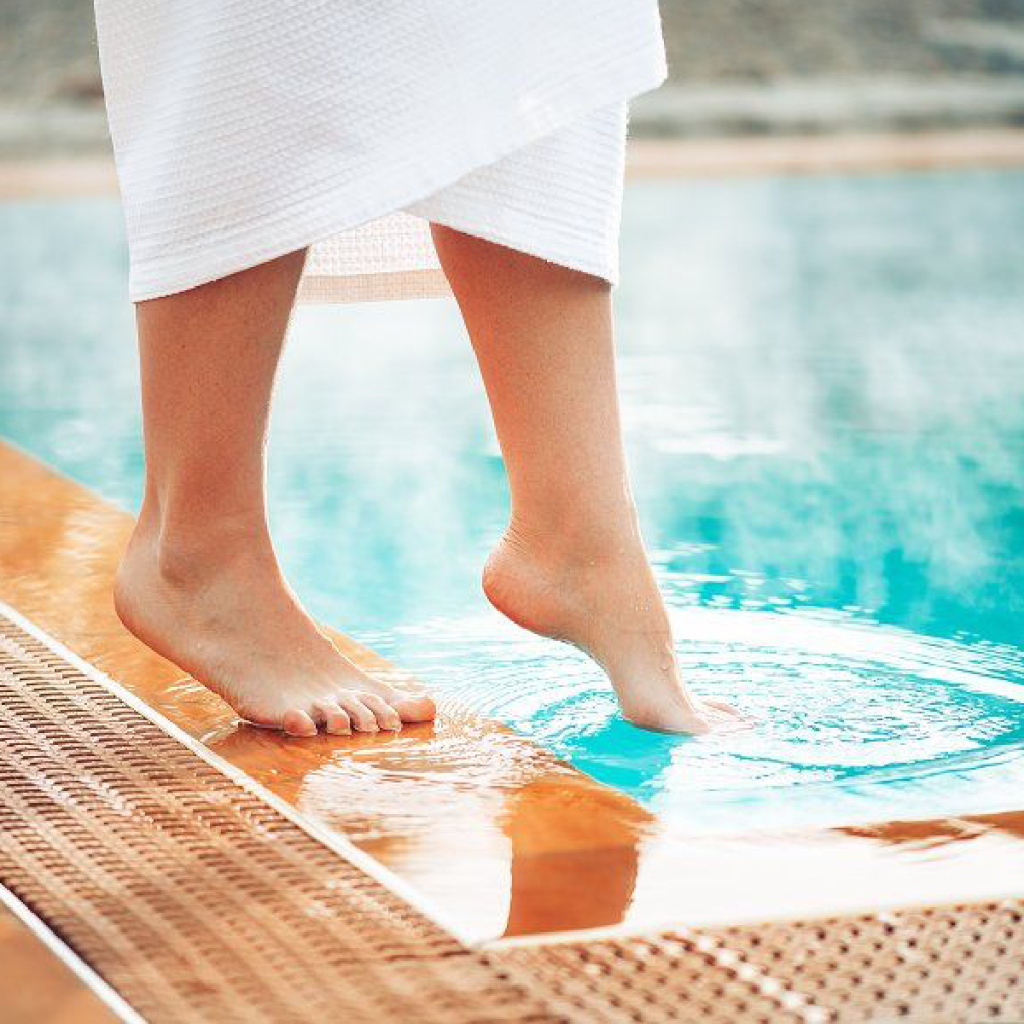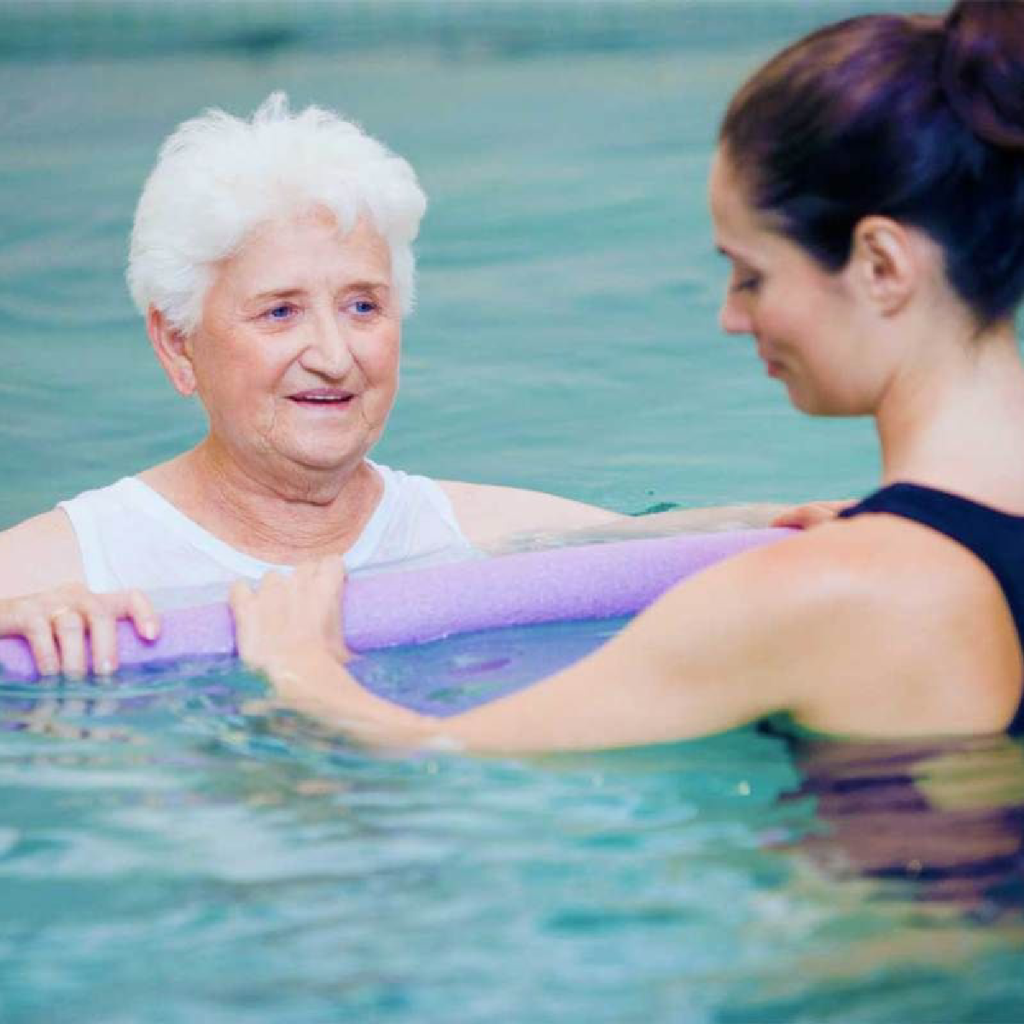Discover the potential benefits of swimming for improving joint mobility.
Can Swimming Help Improve Joint Mobility?
Joint mobility is an essential aspect of overall health and well-being. The ability to move freely without pain or stiffness is crucial for daily activities and maintaining an active lifestyle. Fortunately, swimming, a fun and refreshing exercise, has been found to be highly effective in improving joint mobility. In this article, we will explore the science behind swimming and its impact on joint health, as well as the various benefits and techniques that can help you make the most of your swimming sessions. So, grab your swim cap and goggles, and let’s dive in!

Understanding Joint Mobility
What is Joint Mobility?
Joint mobility refers to the range of motion (ROM) that a specific joint can achieve without causing discomfort or pain. Joints connect our bones and provide the flexibility needed for movement. When joints are healthy and mobile, we can move freely and perform daily tasks with ease.
Let’s take a closer look at how joint mobility works. Each joint in our body is surrounded by a capsule made up of connective tissue. Inside this capsule, there is synovial fluid, which acts as a lubricant, allowing the joint to move smoothly. The joint is also supported by ligaments, which provide stability and prevent excessive movement.
For example, think about your shoulder joint. It is a ball-and-socket joint, which means it allows movement in multiple directions. This joint’s mobility allows you to raise your arm, rotate it, and reach for objects in various positions. Without proper joint mobility, these movements would be limited, causing discomfort and hindering your daily activities.
The Importance of Joint Mobility
Having good joint mobility is essential for maintaining an active lifestyle and preventing injuries. It allows us to perform activities such as walking, running, and even reaching for objects without limitations or discomfort. Joint mobility also plays a vital role in maintaining proper posture and balance, which are crucial for overall body alignment and stability.
When we have limited joint mobility, it can lead to various issues. One common problem is muscle imbalances. When a joint doesn’t move through its full range of motion, certain muscles become overactive and others become underactive. This imbalance can result in poor movement patterns and increase the risk of injuries.
Additionally, limited joint mobility can affect our overall quality of life. Imagine not being able to bend your knees fully or rotate your neck freely. Simple tasks like tying shoelaces or looking over your shoulder become challenging and frustrating. By maintaining good joint mobility, we can continue to enjoy an active and independent lifestyle.
It’s important to note that joint mobility can vary from person to person. Factors such as age, genetics, and previous injuries can influence the range of motion in our joints. However, with regular exercise, stretching, and proper joint care, we can improve and maintain our joint mobility throughout our lives.
The Science Behind Swimming and Joint Mobility
How Swimming Impacts Joints
- Swimming is a low-impact exercise that puts minimal stress on the joints, making it ideal for individuals with joint issues or those recovering from injuries. Unlike high-impact activities like running or jumping, swimming allows for smooth movements without placing excessive strain on the joints.
- Water provides buoyancy, reducing the effects of gravity on our bodies. This buoyancy creates a supportive environment that alleviates pressure on joints, allowing them to move more freely and with reduced pain or discomfort.
Swimming not only provides a low-impact workout, but it also offers numerous benefits for joint mobility. The repetitive movements involved in swimming help to improve joint flexibility and range of motion. As you move your arms and legs through the water, your joints go through a full range of motion, promoting their overall health and function.
Moreover, swimming engages multiple muscle groups simultaneously, which helps to strengthen the muscles surrounding the joints. Strong muscles provide better support and stability to the joints, reducing the risk of injuries and enhancing joint mobility. The continuous resistance of the water also helps to improve muscle strength, making swimming an excellent form of gentle strength training.
The Role of Water Resistance in Joint Mobility
Water is more resistant than air, requiring our muscles and joints to work harder while swimming. This resistance serves as a gentle form of strength training for the muscles surrounding the joints, improving their stability and function. Additionally, the resistance helps in building strength and endurance, further supporting joint mobility.
When you swim, the resistance of the water provides a constant challenge to your muscles and joints. This resistance forces your muscles to work against the water, leading to increased muscle strength and endurance. As your muscles become stronger, they provide better support to your joints, allowing for improved joint mobility.
Furthermore, the resistance of the water helps to improve joint stability. As you move through the water, your joints are required to maintain proper alignment and control, which enhances their stability and reduces the risk of injuries. This increased joint stability translates into better overall joint mobility and function.
In conclusion, swimming is a highly beneficial exercise for joint mobility. Its low-impact nature, combined with the buoyancy and resistance of water, creates an ideal environment for improving joint health and function. By regularly incorporating swimming into your fitness routine, you can enhance joint flexibility, strengthen surrounding muscles, and enjoy the numerous benefits that swimming offers for overall joint mobility.
Benefits of Swimming for Joint Mobility
Pain Reduction and Swimming
Swimming is known to have analgesic properties, meaning it can help reduce pain associated with joint issues like arthritis or inflammation. The water’s buoyancy and the gentle movements involved in swimming help to reduce joint compression and inflammation, providing relief and helping individuals manage their pain more effectively.
Imagine yourself gliding through the water, weightless and free. As you swim, the water’s buoyancy supports your body, relieving the pressure on your joints. This reduction in joint compression allows for increased blood flow to the affected areas, promoting healing and reducing pain. The gentle movements of swimming also help to stimulate the production of endorphins, the body’s natural painkillers, further enhancing the analgesic effect.
Moreover, swimming provides a low-impact environment for exercise, which is particularly beneficial for individuals with joint issues. Unlike high-impact activities like running or jumping, swimming minimizes the stress placed on the joints, making it a safe and effective option for pain reduction.
Increased Flexibility Through Swimming
Regular swimming promotes increased flexibility in joints and muscles. The continuous stretching and extension of limbs during swimming activities help to improve and maintain the range of motion, resulting in enhanced joint mobility. Furthermore, swimming also helps to lengthen and strengthen muscles, providing additional support to the joints.
When you swim, your body moves through a wide range of motions, from reaching forward with your arms to kicking your legs behind you. These movements stretch and elongate the muscles surrounding your joints, increasing their flexibility. With each stroke, your muscles become more supple, allowing for greater freedom of movement.
Additionally, swimming engages both the upper and lower body, providing a full-body workout. This balanced exercise routine helps to strengthen the muscles that support the joints, reducing the risk of injury and improving overall joint stability. As your muscles become stronger, they can better absorb the impact and stress placed on the joints during daily activities.
Furthermore, swimming is a non-weight bearing exercise, meaning it does not put excessive strain on the joints. This makes it an ideal form of exercise for individuals with conditions such as osteoarthritis, where high-impact activities may exacerbate joint pain. By engaging in regular swimming sessions, individuals can maintain and improve their joint flexibility, allowing them to enjoy a more active and pain-free lifestyle.
Swimming Techniques for Improved Joint Mobility
Swimming is not only a great way to stay fit and active, but it can also be incredibly beneficial for improving joint mobility. By engaging in specific swimming strokes and following proper warm-up and cool-down routines, you can enhance your joint health and reduce the risk of injuries.
Best Swimming Strokes for Joint Health
When it comes to swimming for joint mobility, certain strokes offer specific benefits. The freestyle stroke, also known as front crawl, is generally considered the most joint-friendly stroke. Its alternating arm movements and rhythmic kicking provide an excellent overall workout while minimizing stress on the joints.
In addition to the freestyle stroke, the backstroke is another great option for promoting joint health. This stroke allows for gentle movements and supports proper body alignment, reducing the risk of strain on the joints. The backstroke is particularly beneficial for individuals who may experience discomfort or pain in their joints during other activities.
For those with arthritis or joint issues, the breaststroke is a good option. Its slower tempo and symmetrical movements offer comfort while exercising, allowing individuals to work on their joint mobility without putting excessive strain on their joints.
Warm-Up and Cool-Down Routines for Swimmers
Just like any other exercise, swimming requires proper warm-up and cool-down routines to enhance joint mobility and prevent injuries. Before hopping into the water, it is important to start with some light stretching exercises to loosen up the muscles and joints. Focus on stretching the major muscle groups, such as the shoulders, hips, and knees. This will help prepare your body for the upcoming swim and reduce the risk of muscle strains or joint sprains.
After your swimming session, take a few minutes for a cool-down routine. This can include slow swimming or gentle movements that allow the body to gradually return to its resting state. Cooling down is essential as it helps to prevent post-swim muscle soreness and stiffness. Finish off your cool-down with some more stretches to relieve any residual tension in the muscles and promote joint flexibility.
Remember, swimming is a low-impact exercise that puts minimal stress on the joints, making it an ideal choice for individuals with joint issues or those looking to improve their joint mobility. By incorporating the right swimming strokes and following proper warm-up and cool-down routines, you can make the most out of your swimming sessions and enjoy the numerous benefits it offers for your joint health.
Precautions and Considerations for Swimming with Joint Issues

When to Avoid Swimming for Joint Mobility
Although swimming can be highly beneficial for joint mobility, there are times when caution is warranted. If you have an open wound, skin infection, or any other contagious condition, it’s best to avoid swimming until you have fully recovered. Additionally, if you experience severe pain or discomfort during swimming, it’s advisable to consult with a healthcare professional before continuing.
Consulting with Health Professionals About Swimming
If you have existing joint issues or any other pre-existing conditions, it is always wise to consult with a healthcare professional before starting a swimming regimen. They can provide valuable guidance and tailor an exercise plan that suits your specific needs, ensuring you can enjoy the benefits of swimming while minimizing any potential risks.
In conclusion, swimming can indeed help improve joint mobility. Its low-impact nature, water resistance, and the supportive environment of water make it an ideal exercise for maintaining and enhancing joint health. By incorporating swimming into your fitness routine and following proper techniques, you can embrace the joy of swimming while nurturing your joints and experiencing the freedom of pain-free movement. So, let the water embrace you, and let the swim begin!








Your point of view caught my eye and was very interesting. Thanks. I have a question for you. https://www.binance.com/es-MX/register?ref=JHQQKNKN
Thanks for sharing. I read many of your blog posts, cool, your blog is very good.